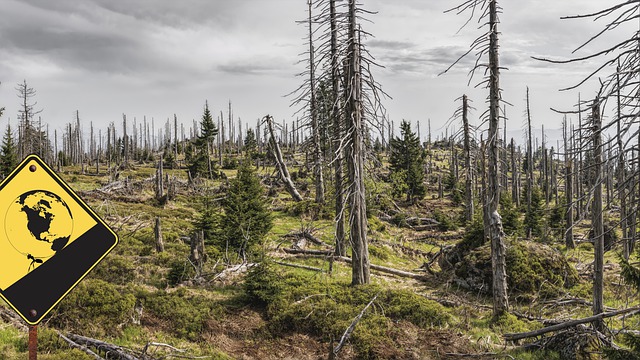
Acid rain is mainly produced by certain industrial activities and pollution from vehicles that use fossil fuels.
Rain is a concept that comes from the Latin word pluvia . This is the name given to the water that falls from the clouds to the surface .
The adjective acid , meanwhile, refers to sour. In the field of chemistry , it specifically qualifies what has a pH that is less than 7 or the substance that, when in a solution , increases the existing concentration of hydrogen ions and can be combined with a base to develop a salt.
From these ideas, we can move forward with the definition of acid rain . This is what happens when acid pollutants from industrial activity and vehicle combustion fall from the atmosphere .
Origin of acid rain
The formation of acid rain occurs when moisture found in the air comes into contact with sulfur dioxide , nitrogen oxides and other substances emitted by factories in different sectors and means of transportation that use fossil fuels. The combination between water and these contaminants produces sulfuric acid , sulfurous acid and nitric acid , which end up falling to the ground.
It is important to consider that acid rain does not always appear in the same place that constitutes the source of contamination . The wind can transport pollutants over long distances before the precipitation in question occurs, whether in the form of rain, snow , hail , etc.
It should be noted that rain usually has an approximate pH of 5.65 . When the pH drops below 5.1 , it is referred to as acid rain.

Acid rain can cause various environmental damages.
Its effects
Acid rain generates multiple environmental problems. When it falls on plants , it can destroy gardens, crops and forests, for example. Among other consequences, it makes it difficult for trees to absorb water and destroys nutrients in the soil .
This type of precipitation also causes acidification of the water in seas, rivers, lagoons and lakes, threatening the survival of organisms that live in the aquatic environment.
It cannot be ignored that acid rain even damages buildings. Due to its high corrosive index, it is able to dissolve materials used in constructions and monuments.
How to avoid acid rain
Faced with these negative consequences, it is essential to take measures so that acid rain does not occur. Of course, the key is to reduce polluting emissions .
Specifically, specialists recommend above all reducing nitrogen and sulfur oxide emissions. For this, electric transportation must be promoted, the conditions associated with combustion in different machines must be controlled, and alkaline compounds must be added to rivers and lakes, among other actions.
Beyond the anthropic
Although the most important cause of acid rain is human activity, the phenomenon can also be due to natural causes. That is, it can occur without human intervention.
When a volcano erupts , to mention one case, certain chemical compounds reach the atmosphere that drive acidification. Something similar happens with the decomposition of vegetables.
